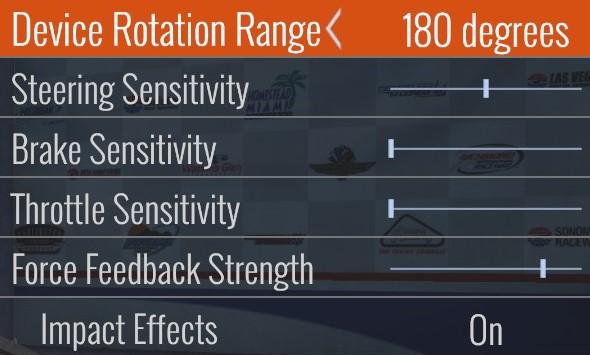Best NASCAR Heat Evolution Settings for Thrustmaster T248
NASCAR Heat Evolution plays very well with a wheel, but it does need some tweaking to get the best experience when using the Thrustmaster T248. The default settings leave the wheel feeling quite weak, which is easily fixed in-game.
There is no soft lock in this game, meaning that you can continue turning the wheel past the point you can in the real car. Nothing happens in game when you do this, the input is ignored entirely, but it makes it much harder to control a spin, for instance, when you can't tell when you've reached that maximum rotation angle. This is easily fixed by setting the steering angle on the wheel itself.
In this guide, I will show how to correct both of these issues by setting the proper values in game, on the wheel and in the Thrustmaster Control Panel, if playing on PC.
Thrustmaster Control Panel Settings
The big issue with NASCAR Heat Evolution is setting the steering angle correctly. In some games, the lack of a Soft Lock feature isn't that big of a deal because you only very rarely reach that point. In NASCAR, however, the steering angle is very small and you will frequently hit the maximum rotation angle. When the wheel keeps turning past that point, the game just doesn't feel right and the cars are harder to control as a result.
We can correct this by changing the rotation angle on the wheel itself, which will provide the rotation lock, and modifying the in-game settings to match this.
| On-Wheel Setting | Value |
|---|---|
| ROT | 270° |
| FORCE | 4 |
| FFB | 1 |
FORCE at 4 bars with FFB at 1 creates a perfectly linear force feedback response with no clipping, which is the ideal for any racing game.
| TM Control Panel Setting | Value |
|---|---|
| Rotation | 270° |
| Overall Strength of all forces | 65% |
| Constant | 100% |
| Periodic | 100% |
| Spring | 100% |
| Damper | 100% |
| BOOST | Off |
| Auto-Center | by the game |
Rotation and Overall Strength are identical to the ROT and FORCE wheel settings, respectively. Changing it in one place overwrites the other. I recommend changing these on the wheel and ignoring the values in the Thrustmaster Control Panel.
Spring and Damper are not used by NASCAR Heat Evolution, so the value actually doesn't matter. Some games require these to be on for their force feedback to work, so I keep them at 100% as a general rule.
BOOST should always be turned off. For an in-depth look as to why, see my BOOST Force Feedback Analysis.
NASCAR Heat Evolution Settings
First Time Setup
In order to use your wheel, you need to run the "Configure Controllers" app to set up the button bindings.
| Setting | Value |
|---|---|
| Is a Steering Wheel | Yes |
| Has Force Feedback | Yes |
| Steering Deadzone | 0.0 |
Tell it you are using a steering wheel with force feedback and bind the buttons however you like. Make sure to set the Steering Deadzone to 0.0. The first time I set this up, I missed that section.
In Options > Game Settings > Advanced Settings:
| Setting | Value |
|---|---|
| Physics | Simulation |
| Transmission | Manual |
For the best experience, I recommend using the Simulation physics and the manual transmission.
In Options > Controls:
The settings don't have any numerical values, just a simple slider. The default value is usually the center, which I will refer to as 0 in the following settings. The sliders can go from -5, if fully to the left, all the way to +5, if all the way to the right.

| Setting | Value |
|---|---|
| Device Rotation Range | 180 degrees |
| Steering Sensitivity | 0 |
| Brake Sensitivity | -5 |
| Throttle Sensitivity | -5 |
| Force Feedback Strength | +3 |
| Impact Effects | On |
Device Rotation Range needs to be less than what was set in the Thrustmaster Control Panel. Even though this is set to 180°, it will still use the full 270° rotation.
Steering Sensitivity should be left at 0. Raising this will make the in-game wheel reach full lock before the actual wheel does. Lowering it will prevent the in-game wheel from being able to reach full lock.
Brake Sensitivity and Throttle Sensitivity are personal preference, but I recommend turning them all the way down to get a more linear response.
Force Feedback Strength controls the resistance to turning based on the tire grip. This needs to be raised a little to get a better feeling for what the car is doing on these wheels. Setting it too high will start to drown out forces while in the corners.
Impact Effects shakes the wheel when you hit other cars or the wall.
Conclusion
As the first game in the Heat series, Heat Evolution dialed back on any heavy simulation, focusing on making the game easy to pick up and play. It works surprisingly well with a wheel. The force feedback does a good job making these cars feel heavy and telling you how much grip the car has.
Let me know if you have any questions or comments.